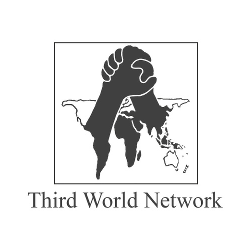By Xavier Godinot, International Movement ATD Fourth World
Paris, late February 2018. It is freezing cold with temperatures of minus 4° C. A head count of homeless people realized within Paris proper has come up with at least 3,624 people sleeping in the streets, in parking garages, train and underground stations. All emergency housing structures are overcrowded and often helpless. The National Statistics Office contends that in France, the number of homeless people has increased by 50 percent from 2001 up to 141,500 people in 2012 and that more than half of them are foreigners. Some 15-20,000 slum-dwellers should be added to this figure. The life expectancy of homeless people is estimated at 49.7 years, 30 years less than that of French males and 35 years less than that of French females. This is the most visible aspect of extreme poverty in France.
How is this reality captured by the Sustainable Development Goals (SDGs) that claim to ‘leave no one behind’ and especially by SDG 1, “End poverty in all its forms everywhere”, and its first target: “By 2030, eradicate extreme poverty for all people everywhere, currently measured as people living on less than $1.90 a day”? Both the language and the spirit of this goal reflect the growing acceptance of the idea that poverty is a multi-dimensional concept that reflects multiple deprivations in various aspects of well-being. Yet, there is much less agreement on the best ways in which those deprivations should be measured.
Until 2017, the World Bank has assumed that most “high income economies had no people living in extreme poverty”, [fn] Ferreira (2017). [/fn] an assumption that ATD Fourth World has been denouncing for years. In response to recommendations from the Report of the Commission on Global Poverty (the Atkinson Report) [fn] World Bank (2016). [/fn] the World Bank announced in October 2017 that it would implement a ‘truly global’ approach to poverty measurement and decided to include high-income countries in its global estimate of people living in poverty. Yet, if you search its database for the proportion of people living in extreme poverty in France, that is, on less than US$ 1.90 a day, you find 0 percent, and the same in Belgium and Germany. It is clear that in high-income countries the poorest are still being made statistically invisible. As a result, the UN SDG Report 2017 was able to state that the number of people living in extreme poverty has fallen significantly, from 1.7 billion in 1999 to 767 million in 2013, which represents a reduction in the global rate of extreme poverty from 28 percent in 1999 to 11 percent in 2013. [fn] UN (2017), p. 3. [/fn] The number of homeless people in France has nearly doubled over the same period, but this is made completely invisible in this global estimate.
Angus Deaton, the 2015 Nobel laureate in economics, stated recently that World Bank figures on poverty miss a very important fact, in that they ignore differences in need among countries. [fn] Deaton (2018). [/fn] There are necessities of life in rich, cold and urban countries that are less needed in poor countries. It is precisely the cost and difficulty of housing that make for so much misery and that are missed by the World Bank global counts. The US$ 1.90/day line was designed for low-income countries and is inappropriate for high-income ones. Following Oxford economist Robert Allen, Deacon suggests using a US$ 4/day line, which is an estimated needs-based absolute poverty line for rich countries.
Thinking of poverty as multi-dimensional poses new questions about the true nature of poverty. Amartya Sen, the 1998 Nobel laureate in economics, stated 40 years ago that “Poverty may be seen as a failure to reach some absolute level of capability”, in our example, a failure to be capable of getting suitable housing when it is freezing cold. He contended that “absolute deprivation in terms of a person’s capabilities relates to relative deprivations in terms of commodities, incomes and resources.” [fn] Sen (1983). [/fn] This is precisely the reason why it is inappropriate to use the same poverty line in developed and developing countries.
World Bank economists have become aware of this and in order to better capture extreme poverty in different national contexts, a World Bank report stated in October 2017:
Starting this month, the World Bank will report poverty rates for all countries using two new international poverty lines: a lower middle-income International Poverty Line, set at $3.20/day; and an upper middle-income International Poverty Line, set at $5.50/day. This will be in addition to the $1.90 International Poverty Line – which remains our headline poverty threshold, and continues to define the Bank’s goal of ending global extreme poverty by 2030. [fn] Ferreira/Sanchez (2017). [/fn]
This is a welcome recognition of the need to better capture extreme poverty that was made invisible in middle-income countries. It means that in order to assess progress towards SDG 1, the US$ 1.90 International Poverty Line (IPL) is clearly insufficient and must be completed by the ratios or numbers of extremely poor people at US$ 5.50 a day. What about high-income countries? No IPL has been defined for them. Yet it is crystal clear that “the cost of escaping poverty rises with the average incomes”, [fn] Ibid. [/fn] as the same World Bank report notes, and that with US$ 165 a month, homeless people in Paris, New York or Tokyo are utterly unable to meet their basic needs and to find any solid accommodation with at least some heating. Yet these people remain invisible in the global estimate of the World Bank and of the United Nations.
The universality of the SDGs is challenging most statistics institutions at international or national level. Implementing SDG 1 requires that extreme poverty be measured in absolute terms, with the meaning Amartya Sen gave to this term. Yet the World Bank is accustomed to measuring absolute poverty in developing countries, not in developed ones, while the OECD or Eurostat is accustomed to measuring relative poverty in high-income countries, not absolute poverty. Eurostat recently stated that “the target for eradicating extreme poverty focuses primarily on developing countries in continuity with the earlier Millennium Development Goals”, [fn] Eurostat (2017), p. 29. [/fn] which is completely at odds with the spirit and the wording of the SDGs. As for the OECD, its set of indicators for monitoring SDGs in member countries includes an indicator of the absolute poverty rate at the level of US$ 10 per person per day, without providing any solid evidence for this figure. [fn] OECD (2017), Annex 1. [/fn]
The Atkinson Report formulated many recommendations in order to improve the global count of people living in extreme poverty. Recommendation 3 proposes that there be investigations of the extent to which people are missing from the global poverty count. In 2005, the French National Observatory on Poverty and Social Exclusion estimated that 2 percent of the population, mainly the most impoverished, were not counted in the census. It is very likely that this proportion has increased dramatically today, with the inflow of refugees, many of whom are undocumented. Recommendation 11 states that the World Bank should publish a portfolio of complementary indicators alongside the global poverty count, which the Bank is starting to do. Recommendation 15 suggests that the Bank should develop a programme of work in conjunction with other international agencies, on a basic-needs estimate of extreme poverty.
Another problem with measuring the IPL in different countries is that the measures conceal behind their apparent clarity the darkness of their calculation. The Report listed not less than 14 non-sampling sources of error in the calculation of the poverty headcount at US$ 1.90 a day. It recommended that the World Bank adopt a ‘total error’ approach, making clear to the general public the margin of error of the Bank’s estimates. World Bank economists responded that this is one of the Commission’s most important recommendations, yet they state that they “do not currently possess the in-house statistical capacity to correctly produce estimates of ‘total error’ arising from the multiplicity of possible sources of error listed above”. [fn] World Bank (2016), p. 5. [/fn] This is highly problematic. By the way, it means that when the Bank contends that global extreme poverty has decreased by a certain percentage over the latest years, you never know whether this reflects on-the-ground improvements or just the margin of error of its calculations. World Bank economists are now making more explicit that their figures are estimates that involve many uncertainties and will now publish estimates of global poverty every other year, instead of every year.
The Atkinson Report also recommended that World Bank and others responsible for poverty statistics explore the use of subjective measures of poverty and use participatory methods to really listen to poor people and understand what defines poverty in their views. The World Bank states that they “fully embrace the principle that in-depth consultation with poor people themselves is essential to an understanding of the true nature of the multifaceted phenomenon we call poverty”. They also envisage that “likely most important and innovative work that pushes the frontiers of our understanding of poverty will continue to take place at the country or subnational levels”. [fn] Ibid., p. 6. [/fn]
To contribute to the goal of taking up these challenges, the International Movement ATD Fourth World and Oxford University have engaged in an international participatory research on the dimensions of poverty and how to measure them. National research teams comprising academics, practitioners and people living in poverty have been set up in six countries: Bangladesh, Bolivia, France, Great Britain, Tanzania and the USA. They are implementing the Merging of Knowledge approach that ATD Fourth World has been refining for 20 years; it enables people living in poverty to work as co-researchers on an equal footing with other participants. [fn] See: www.atd-fourthworld.org/what-we-do/participation/merging-knowledge. [/fn] The outcomes of this challenging project are expected in late 2019.
Xavier Godinot is Research Director at the International Movement ATD Fourth World.
Deaton, Angus (2018): The U.S. can no longer hide from its deep poverty problem. In: New York Times, January 24, 2018.
Eurostat (2017): Sustainable Development in the European Union, 2017 edition. Brussels.
http://ec.europa.eu/eurostat/documents/3217494/8461633/KS-04-17-780-EN-N.pdf/f7694981-6190-46fb-99d…
Ferreira, Francisco (2017): The 2017 global poverty update from the World Bank. World Bank let’s talk development blog.
http://blogs.worldbank.org/developmenttalk/2017-global-poverty-update-world-bank
Ferreira, Francisco/Sanchez, Carolina (2017): A richer array of international poverty lines. World Bank let’s talk development blog.
http://blogs.worldbank.org/developmenttalk/richer-array-international-poverty-lines
OECD (2017): Measuring distance to the SDG targets. Paris.
www.oecd.org/sdd/OECD-Measuring-Distance-to-SDG-Targets.pdf
Sen, Amartya (1983): Poor, Relatively Speaking. Oxford (Oxford Economic Papers 35).
UN (2017): The Sustainable Development Goals Report 2017. New York.
https://unstats.un.org/sdgs/files/report/2017/TheSustainableDevelopmentGoalsReport2017.pdf
World Bank (2017): Monitoring Global Poverty: Report of the Commission on Global Poverty. Washington, DC.
https://openknowledge.worldbank.org/bitstream/handle/10986/25141/9781464809613.pdf
World Bank (2016): Monitoring Global Poverty. A Cover Note to the Report of the Commission on Global Poverty, chaired by Prof. Sir Anthony B. Atkinson, October 18, 2016. Washington, D.C.
http://pubdocs.worldbank.org/en/733161476724983858/MonitoringGlobalPovertyCoverNote.pdf








